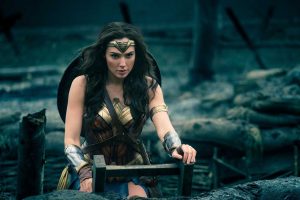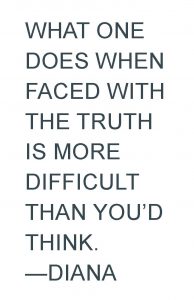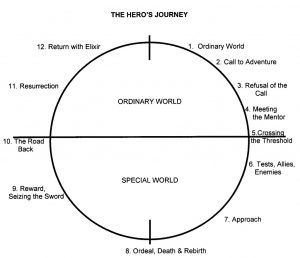The High Reach of “Wonder Woman”

It didn’t take me long into my viewing of “Wonder Woman,” this summer’s mega-hit movie, to understand why it has resonated so deeply. The adventure that Diana undertakes is a fundamental human quest. We needn’t be distracted by Wonder Woman’s DC comic book origins or the video game quality of the combat at the movie’s climax, this story does business in real life today, especially in the hearts of the kids I’m imagining to be the film’s target audience.
Wonder Woman’s Surprising Origin
The core story has respectable origins. Wonder Woman was birthed in the mind of William Moulton Marston, the Harvard educated psychologist who, incidentally invented the systolic blood pressure measuring device and the lie detector. Incongruously, he also wrote on a sophisticated level comic book stories. Marston was an early 20th century feminist drawing inspiration from three exemplary women in his life: his wife, lover, and birth control activist, Margaret Sanger. He also held a deep respect for the potential of comic books to educate and influence.
Of course, the potential of the character, Wonder Woman has captured imaginations beyond the comic book world. She has become several movies and a hit television series. The 2017 movie, which doesn’t use the expression, “Wonder Woman” in the screenplay, conforms to Marston’s original conception.

Wonder Woman’s name is Diana and she is played impressively by actress, Gal Gadot. Diana is not a creature of the earth, but rather of the mythological island, Themyscira. Diana began as a clay object and was given life by Zeus—a genesis that faintly parallels the biblical Adam’s coming into being. Diana’s girlhood on the island is a time of preparation—mostly in traditional combat arts. The scenes of Amazon martial arts training were to me reminiscent of my daughters practicing their gymnastic stunts with friends. I linger on the martial arts training in Themyscira because Diana’s warrior skill which has a nobility about it will come to contrast with the dreary warfare she will encounter once she leaves the island.
Diana’s rearing is purposeful. She is intended from birth to engage and destroy the god of war—one Ares—whom she will encounter on her coming quest.
The Hero’s Journey
The plot of the movie—together with several other recent films (“Star Wars,” “The Hobbit,” “The Matrix,” “Harry Potter,” “The Lion King,” and earlier, “The Wizard of Oz”) follows the now-famous mono-myth pattern of Joseph Campbell’s hero’s adventure. Joseph Campbell, who died in 1987 was the reader of the mythic stories from many ancient cultures. He began to realize that there was one plot pattern that connected all mythologies, namely the story of the hero who goes on an adventure and returns—better for the experience and able to make his or her world better. Movie makers have seen in the hero pattern a movie plot formula that connects deeply with audiences.

This insight is commonplace in internet commentary on Wonder Woman. What is less well known is that the mythic architypes—those deep plot patterns that appear across cultural lines—correspond to the inner, say psychological, drama of the individual. We can look at our own inner quests and see patterns much like the mythic patterns. This is why we are so fascinated with classic stories, like the Arthurian Legends or fairy tales, or even classic myths. We see ourselves and our delimmas in the stories.
So Diana will leave the beautiful island and venture with a guide into the underworld where she will do battle with evil, will prevail, and return with a prize that enriches all around. This is the shape of Wonder Woman’s plot. What makes Wonder Woman so interesting is that the hero is a woman—a much less common version of the story. The adventure begins when American pilot Steve Trevor crashes offshore of the island and is rescued by Diana. This encounter precipates the island’s meeting of the real world, in this case the world embroiled in WWI. Diana then leaves her home for the in order to slay the embodiment of war or the god of war, Ares and to becoming Wonder Woman in the process.
Queen, Warrior, Magician, Lover
Here’s another point. Diana possesses a full hand of personal virtues, presumably as a result of her rearing on the all-women society on the island. Diana’s virtues are a classic array of character qualities, notably the King (Queen), Warrior, Magician, Lover foursome. As we Presbyterians put it: Energy (warrior), Intelligence (magician) Imagination (queen), and love (lover). Having been reared and socialized in an ideal place she enters the world of WWI Britain and there undergoes an instructive culture-shock. This section of the movie was for me the most interesting. Most strikingly, Diana’s wholesome warrior self contrasts with and critiques the cowardly and degenerate masculinity which relies on machinery and chemicals to fight wars. Diana is a master with sword and bow, but she is grieved by the carnage of WWI trench warfare.
Diana’s quest revisits several feminist themes, all of which are important challenges for adolescents today. For example, Diana is beautiful, but not demure. She is lovely in an evening gown, but when her quest requires her to run and fight, the gown flies off and is left in the dirt. The archetypal queen in Diana can be detected in her singular focus on killing the spiritual father of warfare. The men in the story don’t carry a vision for the quest as strongly as does Diana. Her magician self holds deep insight into the principalities and powers and leaders of the spiritual darkness—to borrow biblical verbiage—and the necessity to destroy them rather than becoming caught up in some localized conflict that is destructive and ugly because it is in the thrall of the darkness.
What Happens with Kids Viewing Diana and her Quest
Audiences—especially kids—don’t experience Wonder Woman in the prosaic way that I’m laying out. Youth commentators from age 9 and up use the word inspiring repeatedly to describe their experience of the movie. One young teen spoke of the thrill of Diana running across the no-man’s zone between trenches, saying to herself, “You go, gurl!” Mythic stories like Wonder Woman have always filled a spiritual place for kids and adults alike. In this movie’s case, this inspiration appears to be especially true for adolescent girls. We’re living in a time of sweeping dismantlement of role models. We look in vain to leaders for patterns we wish to imitate. In the current twilight of the heroes kids just might be finding a good old-fashioned heroine adventure pretty moving.

